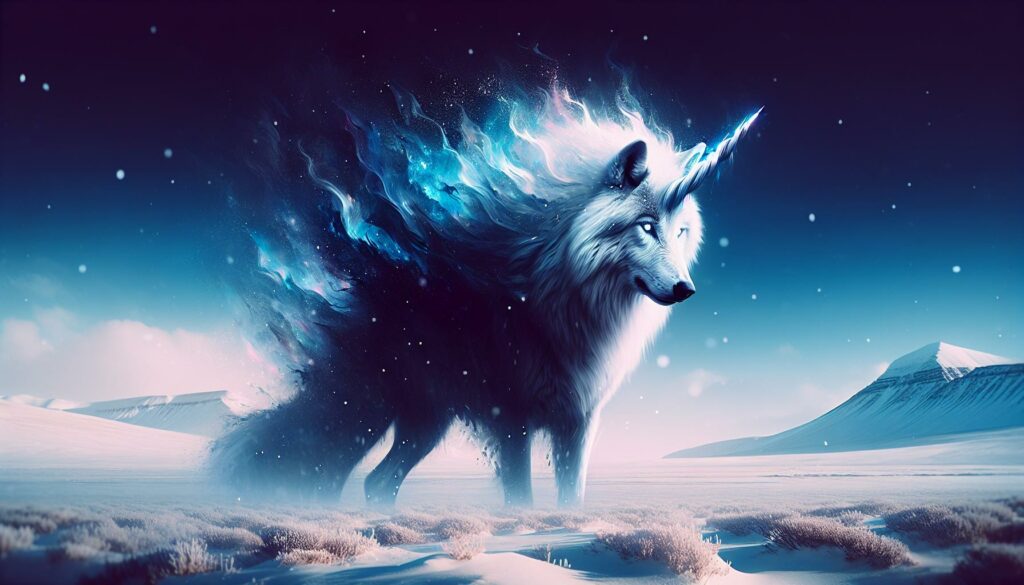Amaroq, the legendary Giant Wolf, has roamed the icy landscapes of Inuit folklore for centuries. I’ve always been fascinated by tales that blend the wild with the mystical, and Amaroq stands out as a symbol of both fear and respect in these rich narratives.
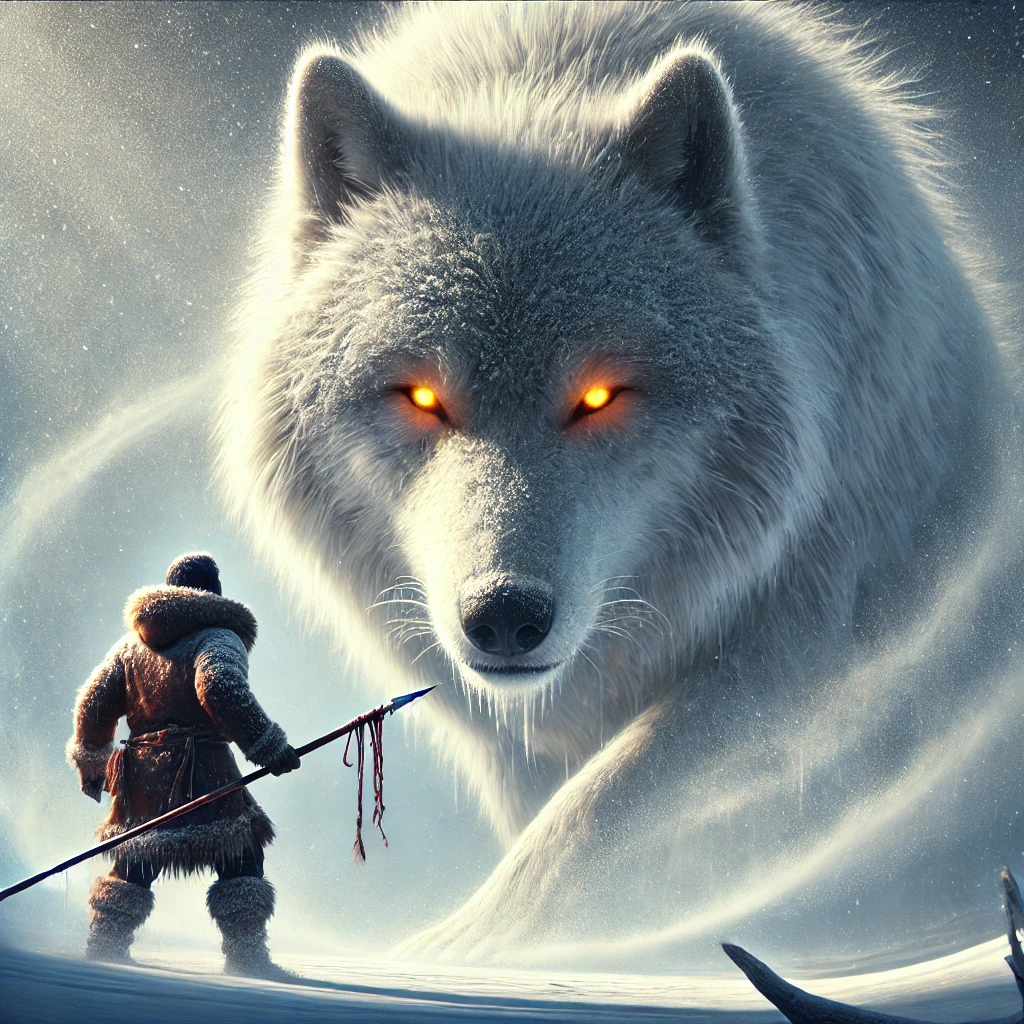
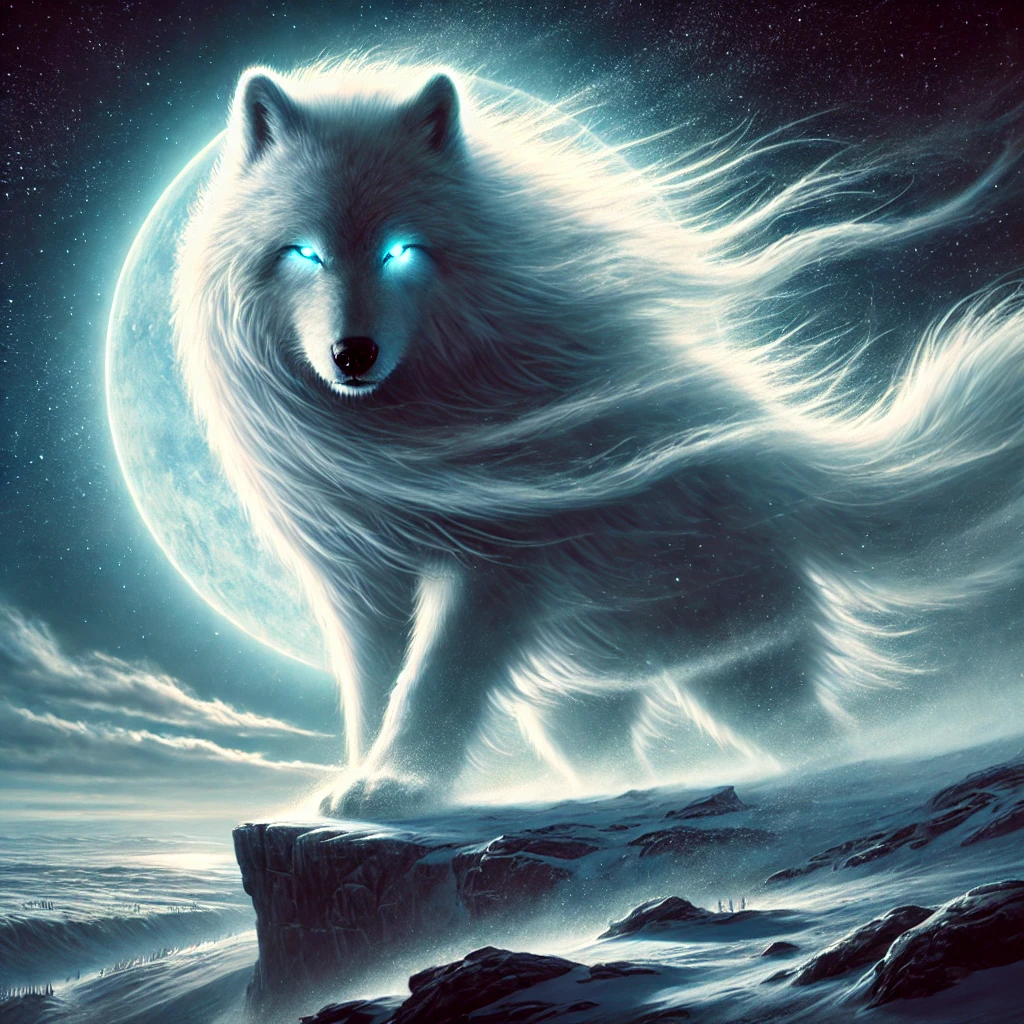
Delving into the lore of this majestic creature reveals a world where nature and myth intertwine. From its fearsome presence to the lessons it imparts, understanding Amaroq offers a unique glimpse into the cultural heritage of the Arctic peoples. Join me as we explore the stories, significance, and enduring legacy of the Giant Wolf.
Physical Characteristics
In exploring Amaroq’s legend, I delve into its imposing physical traits that underscore its mythical presence. The creature’s form reflects power and mystery within the Arctic realm.
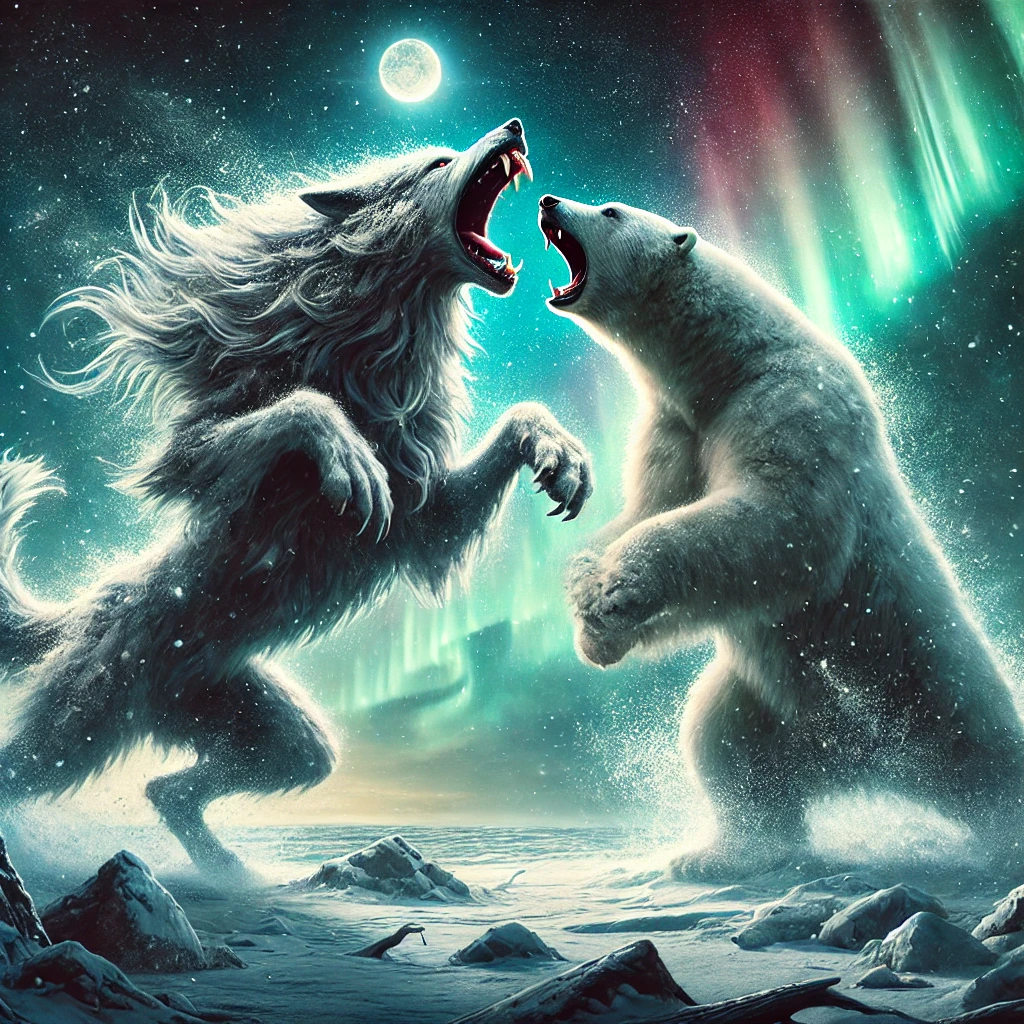
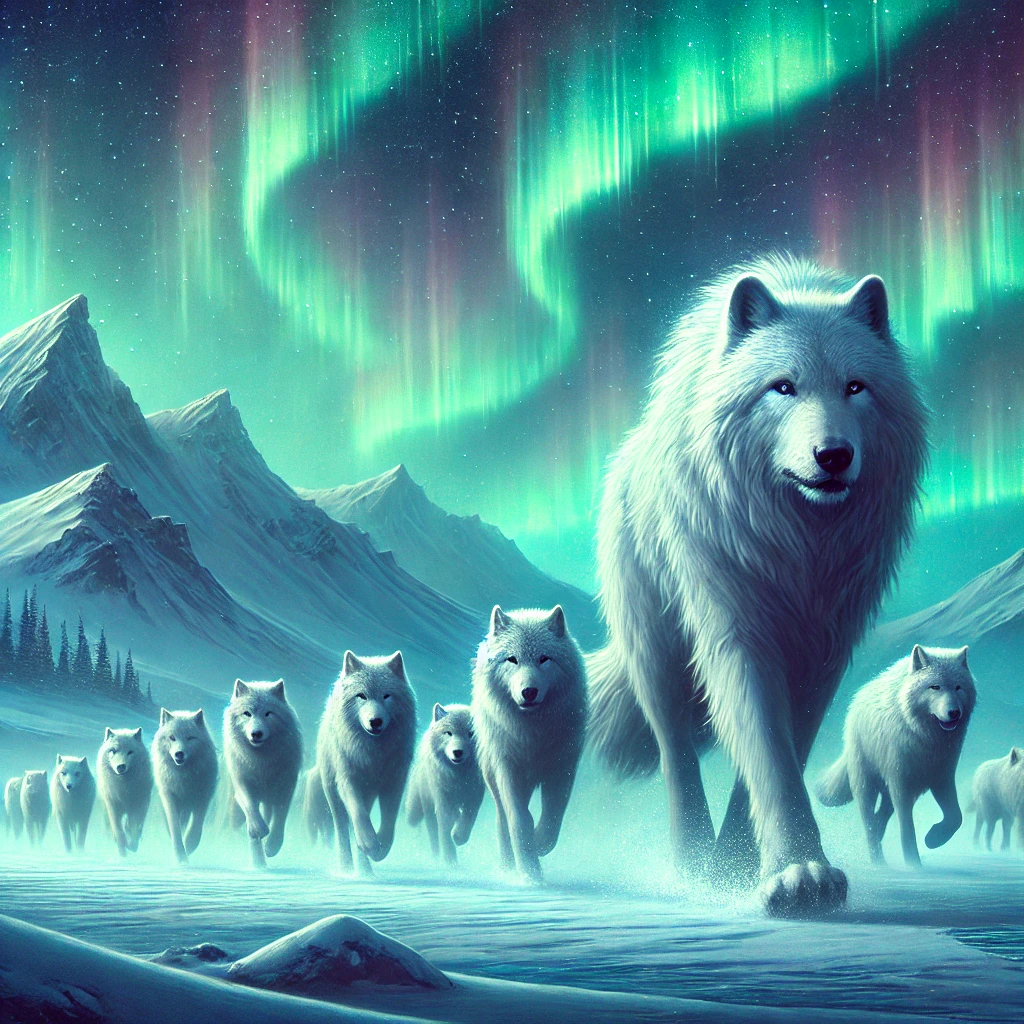
Size and Appearance
I describe Amaroq as standing approximately three times the size of an average wolf, reaching lengths of up to 2 metres and heights of 1.5 metres at the shoulder. Its fur varies from deep midnight black to stark white, allowing it to blend seamlessly into its Arctic surroundings. The creature’s eyes glow with an eerie luminescence, often piercing the darkest nights.
Unique Features
- Enhanced Senses: Its acute hearing and sense of smell surpass ordinary wolves, enabling it to navigate and hunt in the harshest conditions.
- Regenerative Paws: The giant wolf’s paws regenerate rapidly, allowing it to traverse icy terrains without sustaining injury.
- Mystical Aura: A subtle, shimmering aura surrounds Amaroq, linked to its supernatural origins and abilities.
- Luminous Markings: Intricate patterns on its fur emit light during moonlit nights, serving both as camouflage and as a method of communication within its pack.
Habitat and Distribution
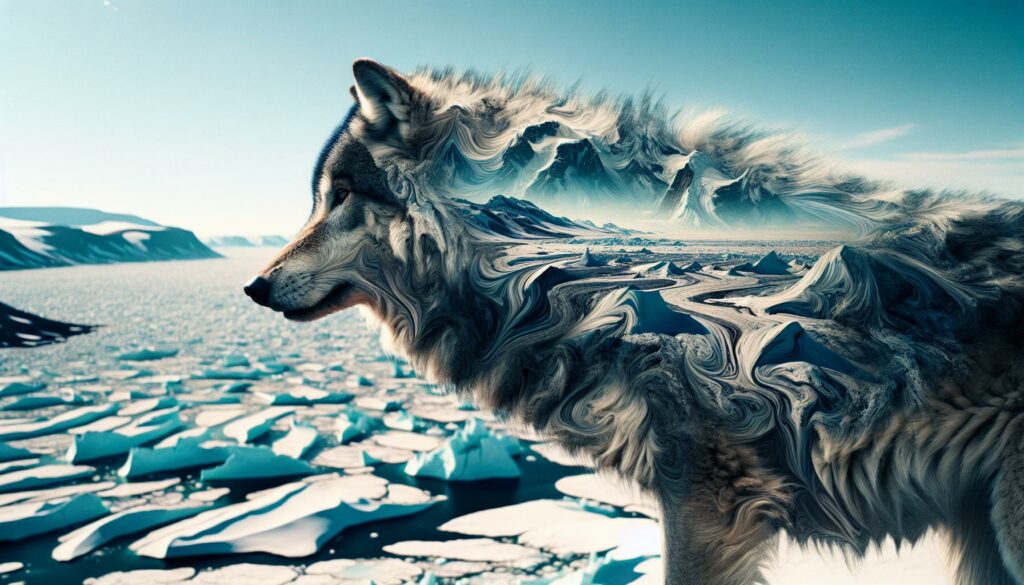
Amaroq inhabits the Arctic regions, encompassing the tundra and ice caps. Adapted to extreme cold, it possesses thick fur and a substantial fat layer that insulates it against freezing temperatures.
Distribution
Amaroq is found across the Arctic tundra of North America, Greenland, and Eurasia. Its range includes:
| Region | Specific Areas |
|---|---|
| North America | Alaska, Northern Canada |
| Greenland | Entire region |
| Eurasia | Northern Europe, Siberia |
Thriving in remote wilderness areas, Amaroq excels in environments that support its hunting practices in snow and ice.
Behaviour and Diet

Amaroq demonstrates behaviours and dietary patterns similar to real wolves, adapted to the Arctic’s extreme conditions.
Hunting Techniques
Amaroq utilizes coordinated pack hunting methods:
- Cooperation: The pack collaborates to track and pursue large prey such as caribou, elk, and bison.
- Role Specialization: Each member assumes specific roles during the hunt, enhancing efficiency and success rates.
- Endurance: The pack engages in sustained chases to tire out prey across the vast tundra.
Social Structure
- Leadership: A dominant alpha leads the pack, directing hunting and territorial defense.
- Communication: Members use vocalizations and body language to coordinate actions and strengthen social bonds.
- Cooperative Care: Responsibilities for nurturing and protecting the young are shared among pack members, ensuring the group’s cohesion and survival.
Cultural Significance
The Amarok embodies self-reliance and independence, reflecting the Inuit’s emphasis on overcoming Arctic challenges. Its immense size symbolizes the primal forces of nature and the harsh realities of survival in the wilderness.
In Inuit animism, the Amarok bridges the physical and spiritual realms. It carries the wolf’s spiritual essence, acting as a mediator between hunter and prey to maintain natural balance[^1][^2][^4].
The Amarok features prominently in Inuit folklore, representing both benevolence and vengeance. These dual aspects highlight the complex relationship between humans and the natural world, emphasizing respect for the environment and the consequences of solitude and hubris[^4][^5].
[^1]: Source 1
[^2]: Source 2
[^4]: Source 4
Conservation Status
Amaroq remains a figure in Inuit mythology and isn’t subject to conservation efforts. Real wolves, however, have varying conservation statuses based on their regions.
Real Wolves
Globally, the gray wolf is listed as “Least Concern” on the IUCN Red List due to its widespread range and stable population. In specific regions, conservation statuses differ:
| Region | Conservation Status |
|---|---|
| Worldwide | Least Concern (IUCN Red List) |
| United States | Protected under the Endangered Species Act (ESA) of 1973 |
| Europe | Varies by country, with some populations protected |
| Canada | Generally stable, with protections in certain provinces |
These classifications reflect the adaptability and resilience of gray wolf populations across diverse habitats. Conservation measures, such as the ESA in the United States, aim to maintain and recover wolf populations where they have declined.
Key Takeaways
- Legendary Presence: Amaroq, the Giant Wolf, is a central figure in Inuit folklore, embodying both fear and respect within Arctic narratives.
- Imposing Physical Traits: Standing up to three times the size of an average wolf, Amaroq features luminescent eyes, regenerating paws, and a mystical aura that enhance its mythical stature.
- Arctic Habitat: This majestic creature roams the tundra and ice caps across North America, Greenland, and Eurasia, perfectly adapted to survive extreme cold and harsh conditions.
- Pack Dynamics: Amaroq demonstrates sophisticated pack hunting techniques and social structures, reflecting the complex behaviours of real wolves in the wilderness.
- Cultural Significance: Symbolising self-reliance and the delicate balance between humans and nature, Amaroq plays a vital role in Inuit cultural heritage and spiritual beliefs.
- Myth vs. Conservation: While Amaroq itself is a mythical entity, its legend highlights the importance of wolf conservation and the varying statuses of real wolves globally.
Conclusion
Discovering Amaroq has truly enriched my understanding of Inuit heritage. This legendary Giant Wolf stands as a testament to the Arctic’s mystique and the people’s deep connection with nature. Amaroq’s story ignites a fascination with the unknown and highlights the power of folklore in shaping our view of the world. I’m inspired to continue exploring these captivating legends and their enduring impact.
Frequently Asked Questions
What is Amaroq in Inuit folklore?
Amaroq is a legendary Giant Wolf in Inuit mythology, symbolising both fear and respect. It embodies the wild and mystical aspects of the Arctic, serving as a powerful figure that reflects the cultural heritage of Inuit peoples. Amaroq is often portrayed as a bridge between the physical and spiritual worlds, representing the primal forces of nature and the challenges of survival in harsh environments.
What are the physical characteristics of Amaroq?
Amaroq is described as an imposing creature, standing three times the size of an average wolf. It can reach up to 2 metres in length and 1.5 metres in height at the shoulder. Its fur varies from deep midnight black to stark white, enabling it to blend into Arctic landscapes. Amaroq possesses glowing eyes, enhanced senses, regenerative paws for navigating icy terrains, and luminous markings that aid in communication within its pack.
Where does Amaroq live?
Amaroq inhabits the Arctic regions, including tundra and ice caps across North America, Greenland, and Eurasia. It thrives in remote wilderness areas such as Alaska, Northern Canada, parts of Northern Europe, and Siberia. Adapted to extreme cold, Amaroq resides in environments that support its hunting practices in snow and ice, making the Arctic tundra its primary habitat.
How does Amaroq behave and what is its diet?
Amaroq exhibits pack hunting behaviours similar to real wolves, adapted to the Arctic’s extreme conditions. It hunts large prey like caribou, elk, and bison using coordinated strategies where each member plays specific roles. The pack engages in sustained chases to exhaust their prey across the vast tundra. Socially, Amaroq packs are led by a dominant alpha, with members communicating through vocalisations and body language to ensure group cohesion and effective hunting.
What is the cultural significance of Amaroq to the Inuit?
Amaroq serves as a symbol of self-reliance and independence, reflecting the Inuit’s resilience in overcoming Arctic challenges. It represents the primal forces of nature and the harsh realities of survival. In Inuit animism, Amaroq mediates the relationship between hunter and prey, maintaining natural balance. The creature embodies both benevolence and vengeance, highlighting the complex interplay between humans and the environment and emphasising respect for nature.
Is Amaroq a real animal and what is its conservation status?
Amaroq is a mythical creature in Inuit folklore and does not exist in the real world, thus it has no conservation status. However, its real-world counterpart, the grey wolf, has varying conservation statuses depending on the region. Globally, grey wolves are listed as “Least Concern” by the IUCN Red List, though specific areas like the United States and parts of Europe have different protections to maintain and recover wolf populations where they have declined.
How does Amaroq differ from real wolves?
Unlike real wolves, Amaroq is a mythical Giant Wolf with supernatural features such as enhanced senses, regenerative paws, and luminous markings. While real wolves exhibit complex social structures and hunting strategies, Amaroq embodies additional mystical qualities linking it to spiritual realms. Amaroq’s immense size and magical attributes set it apart from actual wolves, making it a powerful symbol in Inuit folklore rather than a biological species.
Author

Josh Morley holds a Bachelor’s degree in Theology from the Trinity School of Theology and a Diploma in Theology from the Bible College of Wales. His academic journey involved interfaith community projects and supporting international students, experiences that shaped his leadership and reflective skills. Now based in Liverpool, Josh is also the founder of Marketing the Change, a digital agency specializing in web design and marketing.
View all posts

